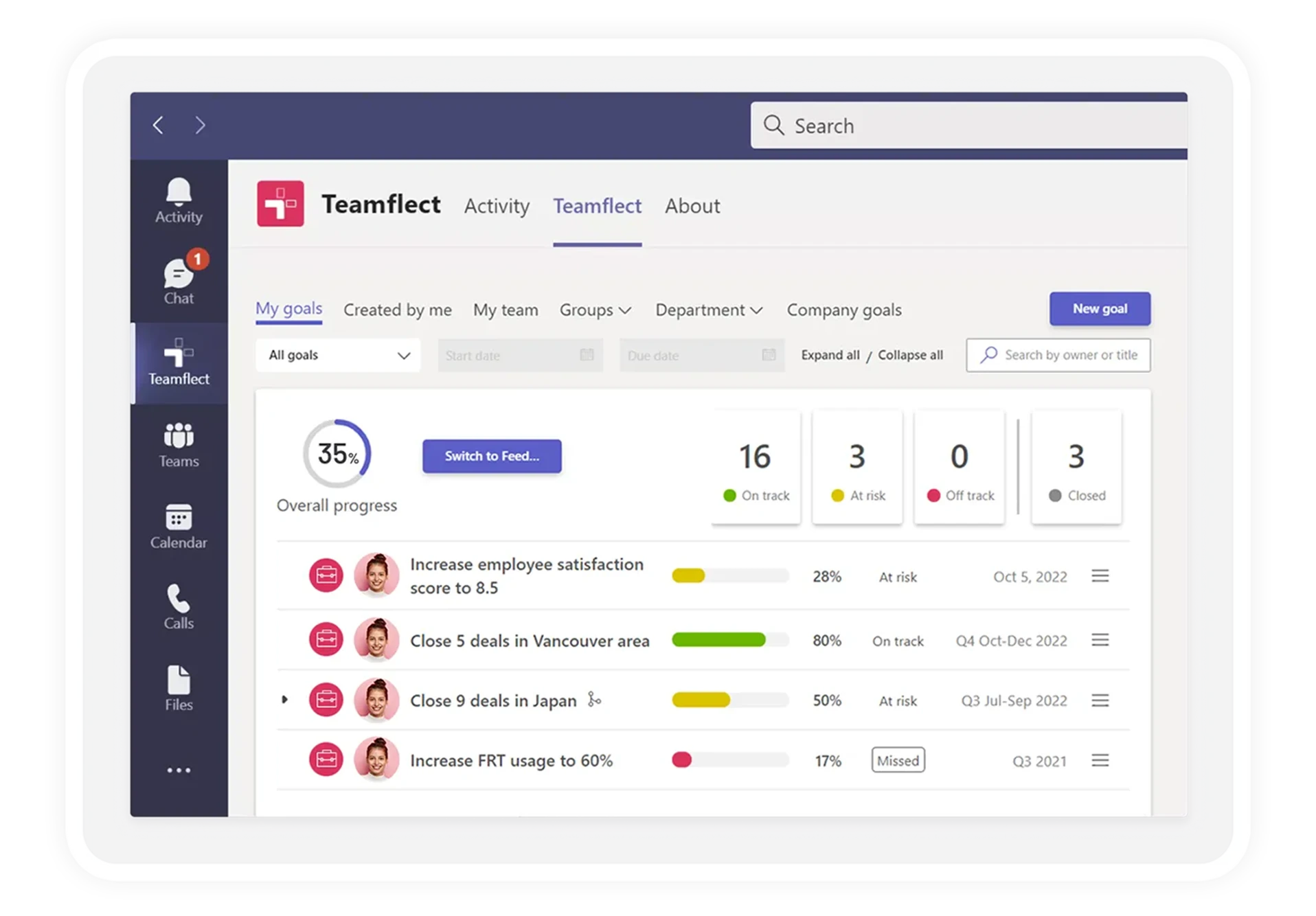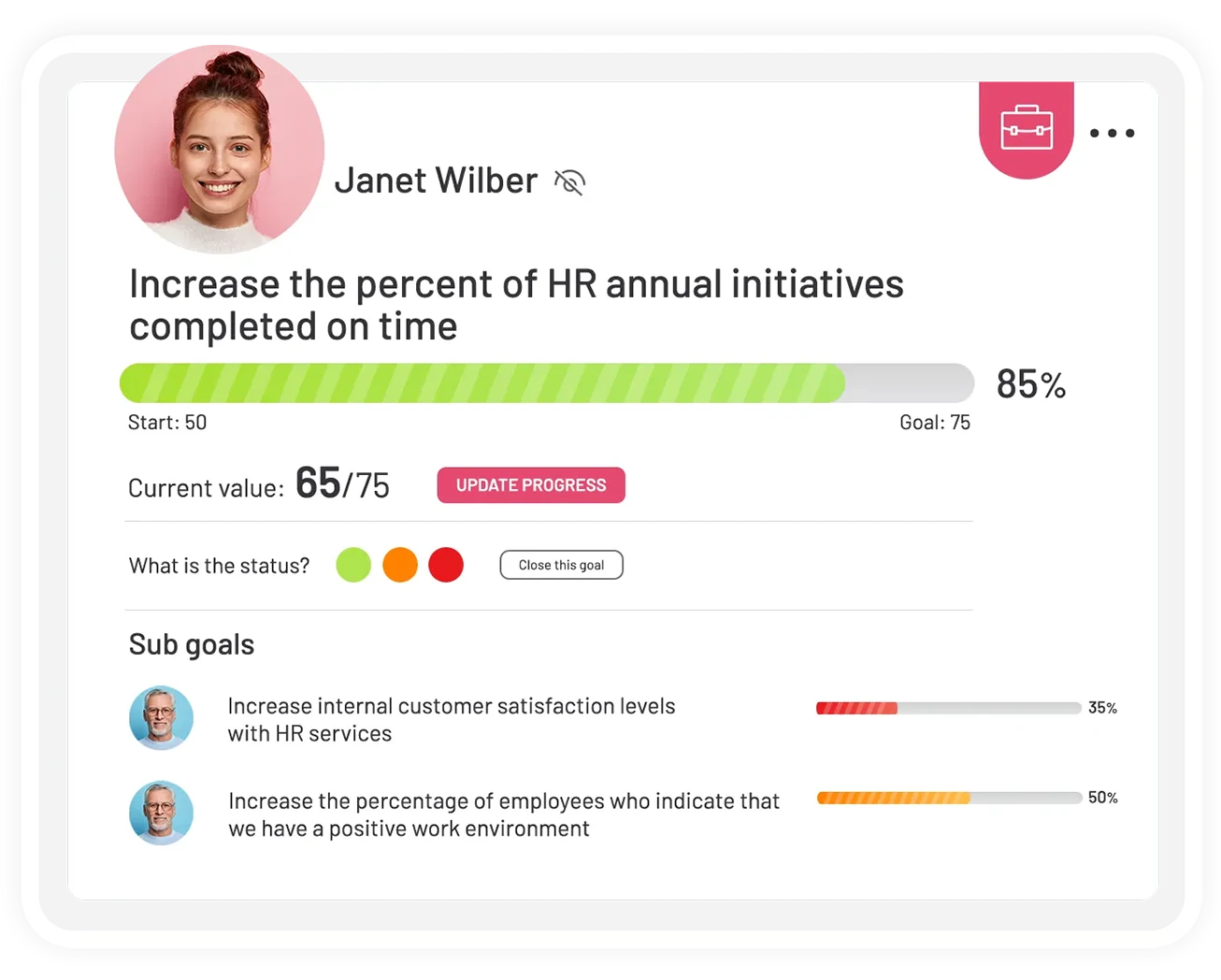OKRs and Agile… Can the union of these two methodologies be the best thing to happen to project management since the emergence of project management software? Could these two methodologies be joined together like Macho Man and Hulk Hogan, Batman and Robin, or peanut butter and jelly? That is exactly why we are here to discuss!
We believe the answer is a resounding: Yes. Using OKRs and Agile methodology together in your goal setting can be the answer you have been looking for all along. Some of the other questions we will be answering are:
- How do OKRs work with Agile?
- What does OKR in Agile stand for?
- Are OKRs part of Agile?
So without beating around the bush any further let’s start discussing just how we can start setting these agile OKRs!
We will start by discussing the basics of both OKRs and Agile, focusing on their strengths, weaknesses, differences, similarities, and finally, how they can work together! Let’s get the ball rolling with Agile.
Table of Contents
Intro to Agile Goal Setting

At its essence, Agile is a set of principles and values that champion collaboration, adaptability, and continuous improvement. Unlike traditional project management approaches, Agile embraces change as a natural part of the process.
It encourages teams to work in short iterations, delivering tangible value in manageable increments. By breaking down complex tasks into smaller pieces, teams can quickly respond to feedback, adjust course if needed, and ensure that the end result meets the customer’s evolving needs.
Strengths of Agile
What is the key factor that makes agile a great methodology for goal setting? Well, it’s all about flexibility and responsiveness. In today’s fast-paced world, where market conditions and customer demands can change in the blink of an eye, being able to adapt is a superpower.
Agile methodologies create a culture of empowerment and transparency, encouraging team members to actively contribute and take ownership of their work.
If we were to highlight three of the most important benefits of agile, they would be the following:
- Flexibility and Adaptability: Agile embraces change and allows teams to respond quickly to evolving requirements and market conditions. In an era where being rigid and stagnant can mean a straight-up death sentence, agile enables organizations to stay nimble and make adjustments as needed, ensuring that the end product meets customer needs.
- Collaboration and Communication: Agile fosters frequent collaboration among cross-functional teams and encourages frequent communication among team members. Through regular meetings, such as daily stand-ups and sprint reviews, and weekly check-ins, everyone stays informed and aligned.
- Incremental Value Delivery: Agile focuses on delivering value incrementally, allowing stakeholders to see tangible progress at regular intervals. This iterative approach helps to validate assumptions, gather feedback, and make necessary adjustments early in the development process.
Weaknesses of Agile
Agile does have its share of challenges. Embracing change can be a bit like riding a roller coaster—thrilling and terrifying at the same time.
Some teams may struggle with managing scope creep, where the project’s boundaries expand beyond what was initially planned. And sprints? They aren’t for everybody. In fact, many industries including gaming, tech, and media are experiencing mass backlash for implementing a sprint culture.
What are the disadvantages of agile?
- A lack of predictability: Believe it or not, being able to see a few steps ahead is quite comforting. It also makes projections a lot easier. Agile makes creating timelines and budgets a tad difficult
- Too demanding: Agile relies heavily on active and engaged team members who are committed to the project’s success. Balancing competing priorities and ensuring full team availability throughout the project lifecycle can be a potential hurdle.
- A lack of structure: Due to the Agile Methodology’s lack of structure, projects can rapidly get off track or exceed their initial scope.
Intro to OKRs

OKRs stand for Objectives and Key Results, and they serve as a compass, guiding teams and individuals toward their desired destinations.
The objectives are ambitious, qualitative goals that capture the essence of what you want to achieve.
Alongside each objective, you have Key Results, which are specific, measurable outcomes that define success. They bring clarity to the objectives, helping you gauge progress and understand when you’ve hit the mark.
Strengths of OKRs
OKRs provide focus and direction. Setting clear objectives and measurable key results guides everyone in the organization and aligns their efforts toward a shared vision.
OKRs also have a positive effect on accountability. When objectives are crystal clear, public, and most importantly measurable it makes everyone aware of a shared responsibility. Everyone knows what they’re working towards and how their efforts contribute to the bigger picture.
- Maintaining focus: OKRs provide a clear focus by defining specific objectives and measurable key results. When teams and individuals have clarity, they are far easier to march toward a common goal.
- Ambition drives innovation: Remember “Field of Dreams”? If you build it, they will come! OKRs incentivize setting ambitious objectives. This in turn results in the team pushing their own boundaries.
- Being measurable: OKRs increase accountability and efficacy by being a quantitative and measurable goal-setting methodology. OKRs can be reviewed and updated regularly, which will end up boosting productivity.
Weaknesses of OKRs
When dealing with OKRs, it is absolutely essential to strike the right balance between overly ambitious objectives and realistic key results. Setting objectives that are too vague or key results that are too easy to achieve can lead to a lack of motivation or complacency.
Being overambitious is a recurring theme when discussing OKRs as setting too many OKRs is another pitfall that leaders often encounter when using the OKR methodology.
If we were to highlight three central weaknesses of OKRs, they would be:
- Overemphasis on Quantifiable Outcomes: OKRs heavily rely on measurable key results, which may result in overlooking important non-measurable aspects of performance.
- Limited Scope: OKRs primarily focus on individual or team-level goals and may not address broader organizational goals or external factors that impact performance.
- Not flexible: With how fast and rapidly every single environment and industry is changing, the objectives you set may not be relevant by the time they are achieved.
Comparing OKRs and Agile
If you’ve stuck with us this far, and why wouldn’t you this is a pretty interesting topic, you might have noticed that the core difference between OKRs and Agile stems from their flexibilities. While OKRs and Agile are both equally viable and effective methodologies that deserve their spots on goal setting templates around the world, they are separated by the simple fact that OKRs are rather solid while Agile is always flexible.
That being said, there are some pretty strong similarities between them.
Similarities between OKRs and Agile
Focus on Collaboration
Both OKRs and Agile methodologies emphasize collaboration as a fundamental element of success. In Agile, cross-functional teams collaborate closely throughout the development process, ensuring continuous communication and shared ownership. Similarly, OKRs encourage collaboration by aligning objectives and key results across teams and fostering a sense of collective responsibility.
Iterative Approach
Agile methodologies are renowned for their iterative nature, breaking down complex projects into smaller, manageable increments known as sprints. OKRs, too, follow an iterative process, with objectives and key results reviewed and updated regularly. This iterative approach enables flexibility, adaptability, and continuous improvement in both OKRs and Agile.
Frequent Check-ins
Agile methodologies incorporate daily stand-up meetings to provide updates, identify and address any obstacles, and ensure alignment within the team. OKRs encourage periodic check-ins and reviews to evaluate progress, provide feedback, and make necessary adjustments to stay on track
Differences between OKRs and Agile
Endgame
Agile methodologies are more about the journey than the destination. On the far end of that spectrum, the entire discussion in OKRs start by establishing an end result, an objective that has to be achieved.
Timeframe
OKRs typically follow a quarterly cadence, aligning with business planning cycles. Agile methodologies, such as Scrum, work in shorter iterations called sprints, often ranging from one to four weeks.
Practicing OKRs and Agile Together: Setting Agile OKRs

Our stance on using OKRs with Agile methodologies was never a secret. We told you at the very start of this article. Can OKRs work with Agile methodologies? Yes! Sure, OKRs and Agile may have distinct characteristics and differences but they can complement each other, leading to a powerful synergy that enhances performance and drives organizational success.
Completing The Puzzle
OKRs and Agile methodologies when examined closely, can be seen as two sides of the same strange coin. While Agile can benefit from OKRs emphasis on outcomes, OKRs can benefit from the iterative, incremental approach that Agile methodologies bring with them.
The Ultimate Empowerment Strategy
Agile methodologies empower teams to take ownership and make decisions independently within their defined scope. OKRs, with their focus on outcomes rather than detailed implementation, complement this autonomy by providing teams with a clear direction and purpose.
Using Agile OKR Software
One of the most important steps in having OKRs and Agile work together is to leverage existing technology as much as you can. While OKRs and Agile are both incredible goal-setting and project-management strategies, blending them together requires a lot of flexibility and adaptability on your part. That is why using flexible OKR software can is your possible option. While there are many amazing OKR software available today that you can find in our article: Top 10 OKR Software, the best option for Microsoft Teams users is…
Teamflect

Putting it simply: Teamflect is the best Microsoft Teams project management software in the market today and for good reason. Designed with complete Microsoft Teams integration in mind, Teamflect makes OKR management inside Teams a breeze.
Without ever having to leave Teams chat, leaders can assign tasks, create goals & subgoals, and take advantage of customizable feedback templates. This makes Teamflect an indispensable tool for those looking to practice OKRs and Agile together.
With Teamflect, exchanging feedback with each iteration, and updating goal progression is always in the flow of work!



